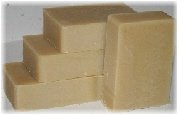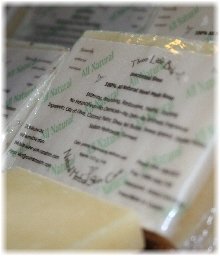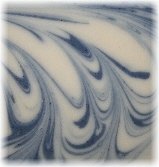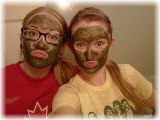Have you ever wondered
How To Make Natural Soap?
Before explaining how to make natural soap, we will explain what soap is.
The Definition of Soap
According to Merriam-Webster's Medical Dictionary, soap is
1 : a cleansing and emulsifying agent made usually by action of alkali on fat or fatty acids and consisting essentially of sodium or potassium salts of such acids
2 : a salt of a fatty acid and a metal
In other words, soap is the result of a chemical reaction between an acid (the fats and oils) and a base (a solution of sodium hydroxide and water, also known as lye).
The result of a reaction between a base and an acid is a salt.
Therefore, soap is a salt. This reaction is called saponification, it takes place when the fats and oils and the lye solution are mixed together and react, they are saponifying, or making soap and glycerin.
In handmade natural soap, soap and glycerin exist together in the finished product. The presence of glycerin, which is a gentle humectant (retains moisture), is one of the main differences between natural soaps and soaps industrially made.
The saponification process occurs when the fats, oils and lye solution are mixed together and react.
This video gives a brief description of how natural soap is made
The Cleansing Action of Soap
Every soap molecule is arranged with a distinct head and tail.
The head is drawn to oil and the tail is drawn to water, by rubbing soap on our skin, the head attaches to the grime and grease, while the tail combines with water, permitting the dirt to be washed away.
The result of soap dissolving in water and combining with oxygen in the air, provides us with the most popular characteristic of soap, the lather.
The Truth About Lye
Lye is a mixture of water and sodium hydroxide (NaOH) .
The lye in soap is responsible for joining the oils and water together, creating soap molecules during saponification (converting ingredients into soap).
If soap does not contain Lye (or an equally caustic substance) it is not a true soap, it is a detergent.
If lye was not an ingredient, we would be left with just water & oil.
Lye becomes neutral in soap during the curing (drying) process, which is a minimum of 4 weeks.
A Brief History of Soap
At first, soap was made from animal fats and potash (wood or seaweed ashes steeped in water) and was generally used for fabrics.
Castile soap (soaps made from olive oils as an alternative to animal fats) was later produced in the Castile region of Spain.
This has traditionally been manufactured in Europe since the early 1600's.
With the increased awareness for maintaining good health and cleanliness, the commercial manufacturing of soap began in the late 1800's.
From How To Make Natural Soap to Pure and Natural Soap
From How To Make Natural Soap to Natural Herbal Skin Care
Help us educate the world, one herb at a time!
Related Pages
Popular Pages















New! Comments
Have your say about what you just read! Leave a comment in the box below.